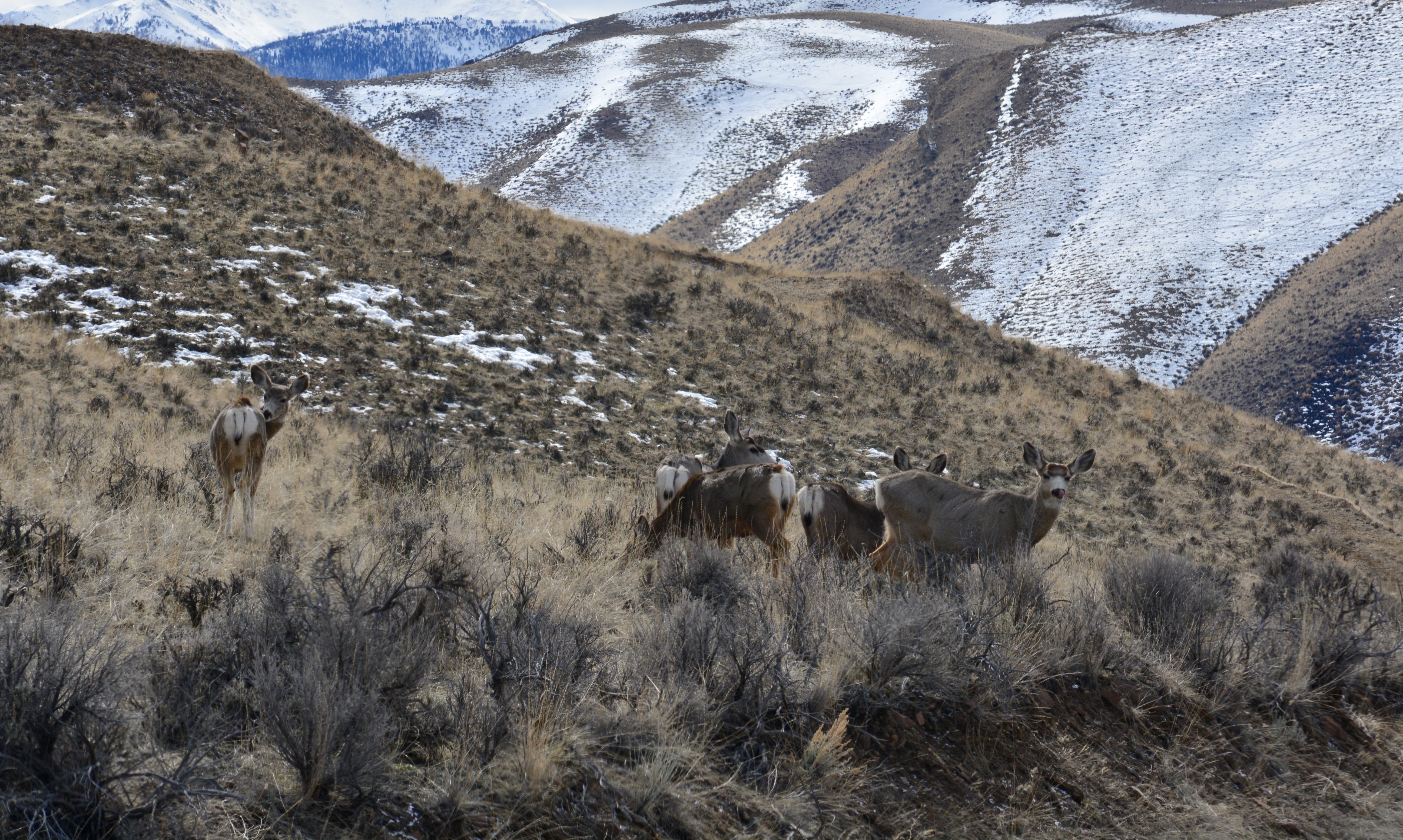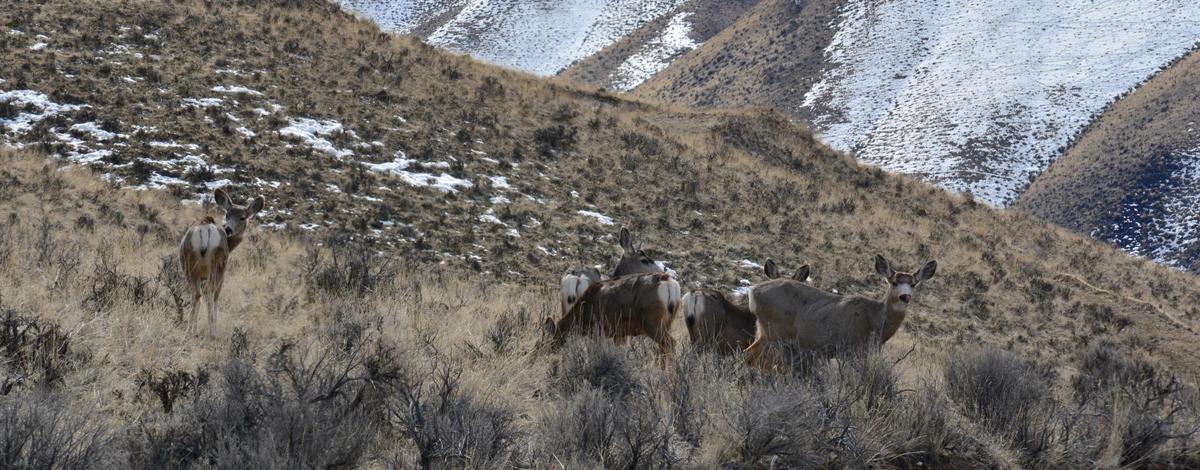
Idaho Fish and Game has spent an unprecedented effort this winter feeding big game animals across southern and eastern Idaho, but it hasn’t done it alone. The department relied on many sportsmen and private landowners.
“Dozens of sportsmen have helped transport and deliver feed, and several landowners have either directly helped with feeding or allowed feeding to be conducted on their property,” assistant chief of wildlife Brad Compton said. "This winter is another reminder of how incredibly valuable sportsmen and private landowners are to helping sustain the wildlife resources we have in Idaho.”
It’s been a challenge for all, and Fish and Game appreciates everyone’s efforts to help wildlife this winter, but the job isn’t over.
Although animals got a much-needed reprieve with some early spring-like weather, they’re survival is far from guaranteed. People should continue to avoid disturbing wintering wildlife, especially people looking for recently shed antlers, or others who recreate in areas where wildlife is present.
Many of Fish and Game’s Wildlife Management Areas remain closed to the public to protect wintering big game. Fish and Game is feeding about 20,000 deer and elk across southern Idaho at a projected cost of about $650,000. Winter feeding is to sustain some animals through winter that might not otherwise make it, and to keep wintering animals off of private property and away from towns, highways and freeways.
In a few instances around the state, snow has melted from lower elevations and south-facing slopes enough that wintering animals have moved away from feed sites and returned to natural browse.
However, Fish and Game officials will continue feeding operations where they are needed, not only to help some animals through winter, but to keep big game animals away from agriculture lands and also from becoming safety hazards.
“Once we start a feeding site, we are committed to continuing to feed there until the animals start to disperse,” said Craig White, state deer and elk coordinator. “That can occur before official spring if hillsides open up and the animals start to forage on natural vegetation.”
In the coming weeks, warmer weather will likely continue, snow will melt and plants will start regrowing. People may think deer and elk have survived winter, but they still have hurdles to overcome. It takes time for deer and elk’s bodies to convert to the fresh forage, and they remain stressed during that transition period.
So far, it’s looking like this winter will be tough on mule deer fawns, and to a lesser extent elk calves, but we’re unlikely to see large adult die-offs if milder weather continues.
Idaho Fish and Game went into winter with about 1,600 deer and elk wearing radio collars, including adults and young. Animals are most likely to succumb to winter kill during late winter and early spring, so biologists continue to track animals through May in most locations.
Mule deer fawn survival was about 75 percent and elk calf survival about 89 percent by mid February, according to data collected. However, survival is likely to drop in the coming weeks, especially for mule deer fawns.
Winter mortality to date is tracking similar to the 2010-11 winter when only 26 percent of radio collared fawns survived, which was the lowest survival in the program’s 18 years of data. Fawn mortality this winter could be similar, White said.
He explained fawns in many parts of the state came into winter in average or slightly below-average condition based on weight. Heavy snow in December is especially hard on the young animals because they burn lots of energy to move, stay warm, and there’s limited food when it’s covered by snow.
He also noted factors other than malnutrition cause winter fawn mortality, such as illness, predation and accidents, which also increase during a hard winter.
Being larger and hardier, elk calves are more likely to survive than fawns, but White still expects more calf mortality this winter. Survival is likely to be lower than the 74 percent of calves that survived last winter, but higher than fawn survival.
The news is better for adult deer and elk, which "seem to be hanging in there pretty well,” White said.
Radio collar data is showing very low mortality for adult deer and elk, less than 2 percent by mid February, which could also change if Idaho gets hit with late-season snowstorms, or prolonged cold weather during early spring.
While southern and eastern Idaho are having challenging winter weather, snowfall and temperatures are close to average in most areas north of the Salmon River. There are no big-game feeding operations north of the Salmon River.
Here's a video of winter feeding operations involving thousands of elk at Fish and Game's Tex Creek Wildlife Management Area.

